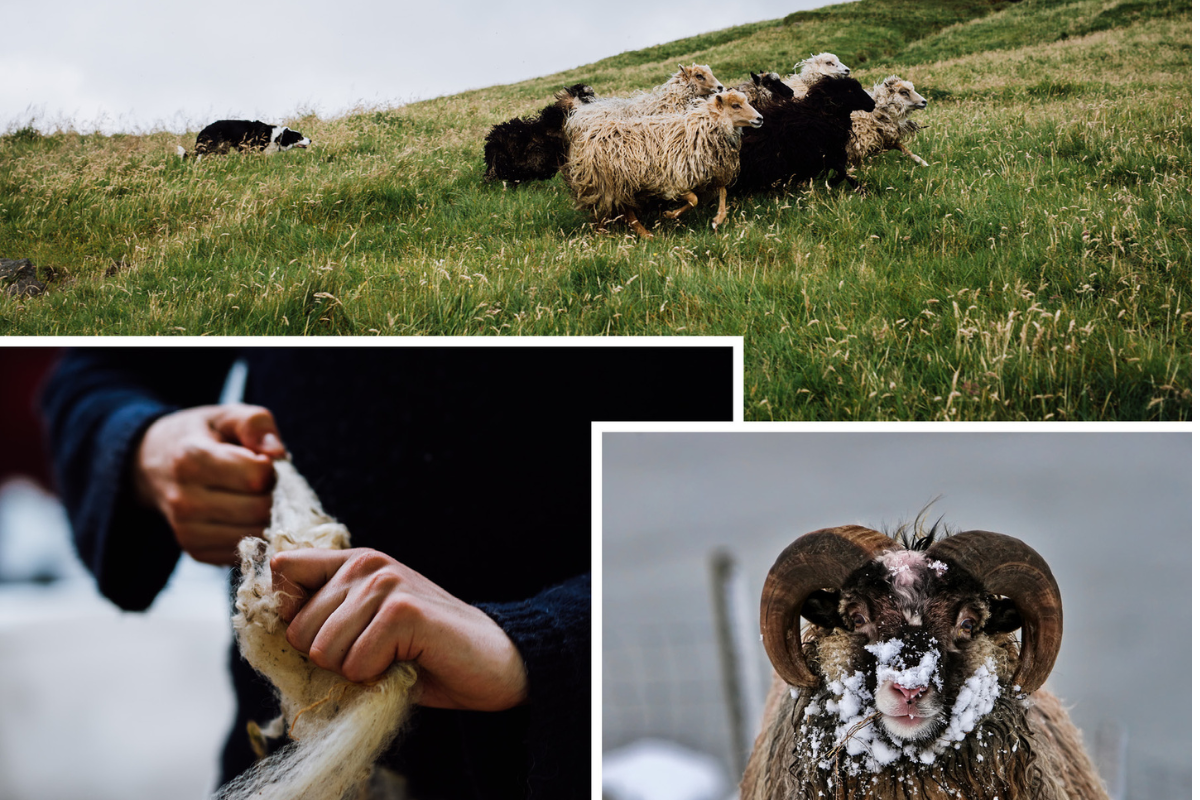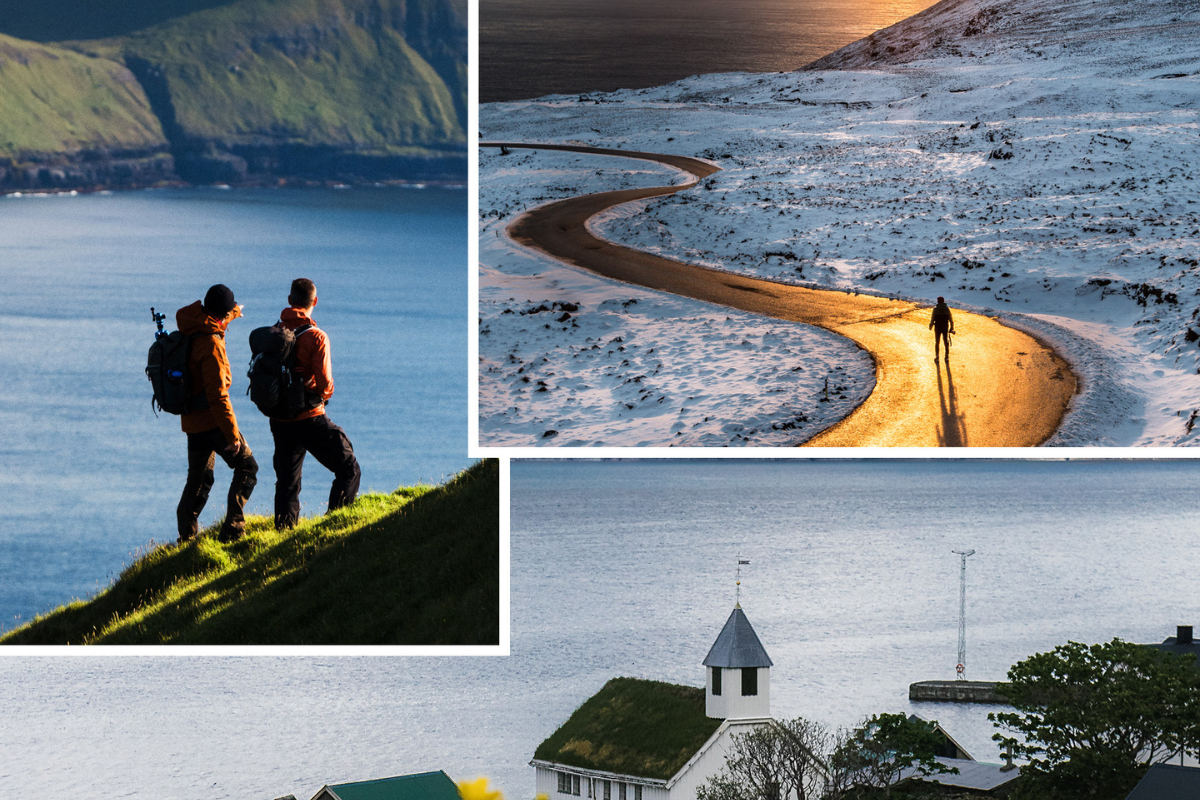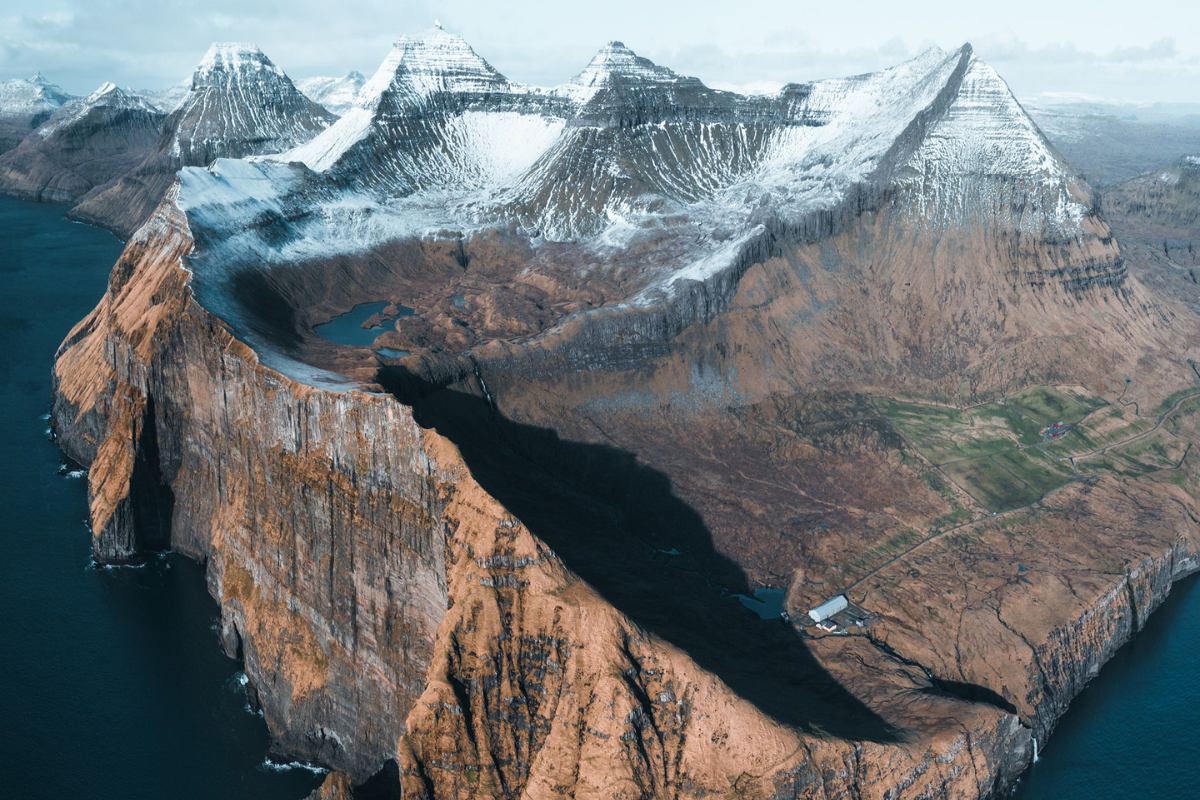“Watch out for sheep,” I remind my partner as we round a cliffside corner. I peer over the edge only to realize a narrow slice of pavement is the only thing separating us from a 60-meter drop into the icy North Atlantic waters.
Travelers may struggle to pinpoint it on a map, but that’s only because the Faroe Islands is a destination you have to see to believe. Towering green hillsides against salmon-filled fjords and colorful turf-roofed villages are like Jurassic Park meets Hans Christian Andersen.
This autonomous Danish archipelago is home to just over 50,000 people and some of the world’s best driving and hiking. In a place with more sheep than people, you can bet you’ll have roads and trails all to yourself – and in a place overflowing with natural beauty, you won’t want to share.
How to get there
The Faroe Islands’ airline, Atlantic Airways, has direct flights from multiple European capitals, including Copenhagen, London, Paris, Edinburgh and Reykjavik. In August of 2023, they also opened their first North American route out of New York’s Stewart International Airport.
Once you’ve safely careened between the mountains to land at Vágar Airport, you can find your rental car. The locally owned Unicar makes picking up your rental from the airport quick and easy. When driving, be mindful that four subsea tunnels require a toll: Vágatunnilin, Norðoyartunnilin, Eysturoyartunnilin and the brand-new Sandoyartunnilin. Newer tunnels like Eysturoyartunnilin and Sandoyartunnilin can cost up to US$25 each way.
Public buses in the Faroe Islands are a sustainable and affordable way to get around the country. The only caveat is buses don’t often visit the smaller villages, meaning you could be waiting for a while in temperamental Faroese weather.



Where to stay
The capital city of Tórshavn is an ideal place to base yourself. As one of the world’s smallest capital cities, all the main attractions, shops and best restaurants are within walking distance.
Opened in 2020, Hotel Brandan is named after the first Irish monk to set foot in the Faroes. This 124-room, turfed-roof hotel on the capital’s outskirts is among the country’s most sustainable accommodations. As a Green Key-certified hotel, the bathrooms have eco-friendly and refillable amenities, the food served here is local and the gym has electricity free equipment. Its design is Scandi-chic with light timber, leather furniture and custom-made artwork from famous local artist Edward Fuglø.
If you’re looking for a true Faroese experience, split your time between Tórshavn and a cozy Airbnb in one of the smaller villages like Gjógv, Tjørnuvík or Æðuvík.
Where to eat
Famous for its salmon and lamb, food doesn’t get much fresher than when dining out in the Faroes. ROKS, the sister restaurant to the Michelin-star KOKS, currently operating out of Greenland, is a must-try. Here, the team serves a multi-course seafood extravaganza. Dishes like sea urchin with cauliflower foam and horse mussel rillette offer up a taste of the island’s best seafood.
For lamb, book a table at Áarstova. Due to the restaurant’s fall-off-the-bone lamb shoulder slow-cooked in beer, “the best lamb of my life” is a phrase commonly heard throughout the dining room.
Famous for its salmon and lamb, food doesn’t get much fresher than when dining out in the Faroes.
And nearby, something uniquely Faroe Islands happens at Ræst. Meaning “fermented” in Faroese, ræst is a traditional method of preserving fish, lamb and whale. The modern set menu here reflects its roots, creating dishes like fermented pilot whale with blubber, potato and fermented sheep guts. Don’t worry, it’s much more delicious than it sounds.
And when you’re looking for a quick bite in between hikes, do as the locals do and stop at the nearest gas station. You’ll see people pull up to a Magn or an Effo around lunchtime for a hot dog. Made mostly of lamb and served inside a fresh French roll with the sauce of your choice, this simple favorite makes for an addictive and affordable midday pit stop.


What to see
After a week of driving around the Faroes, you’ll need a neck massage from craning your head out the window in awe. A visual feast for the eyes, it has seemingly endless skyscraper-tall waterfalls and grand, sweeping landscapes. Combine that with Danish engineering and an expertly connected series of perfectly smooth roads, and you’ll feel like you’re in a car commercial. Spend your trip in the Faroes driving the various Buttercup routes, a homage to the national flower; these scenic routes offer some of the country’s most photo-worthy vistas at a slower pace.
No trip to the Faroes would be complete without at least one hike. The country’s official hiking guide includes 23 routes, including several that now require payment to enter the trail. For insider knowledge and access to some of the country’s best hikes, hire a local guide through GoLocal to help you traverse the lighthouse path on Kalsoy, the puffin colony on Mykines and less-frequented trails that will help you commune with nature.
A visual feast for the eyes, it has seemingly endless skyscraper-tall waterfalls and grand, sweeping landscapes.
Drive to Gásadalur, a village cut off from the world before a tunnel was built in 2004, where you’ll find the Faroe Island’s most photographed landmark. Múlafossur Waterfall cascades into the Atlantic, surrounded by a see-it-to-believe-it backdrop. Due to its location near the airport, it’s best to make it your first destination after picking up your car.
In Tjørnuvík, walk along the black sand beach, or if you’re game, grab a wetsuit and hit the waves with the Faroe Islands Surf Guide. To keep warm, follow the signs for the ‘Waffle Man’ near the village’s turf-roofed house. Step inside this local’s home for a cup of coffee and a homemade waffle with rhubarb jam.
When the weather doesn’t cooperate – which is often – strolling the teeny-tiny villages dotted throughout the fjords is the best activity. Favorites include Tjørnuvík, Gjógv, Kirkjubøur, and Elduvík. Just remember, only a handful of people live in these tight-knit villages, so respecting their privacy is key.



